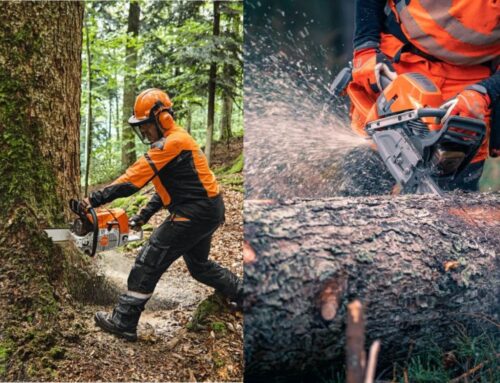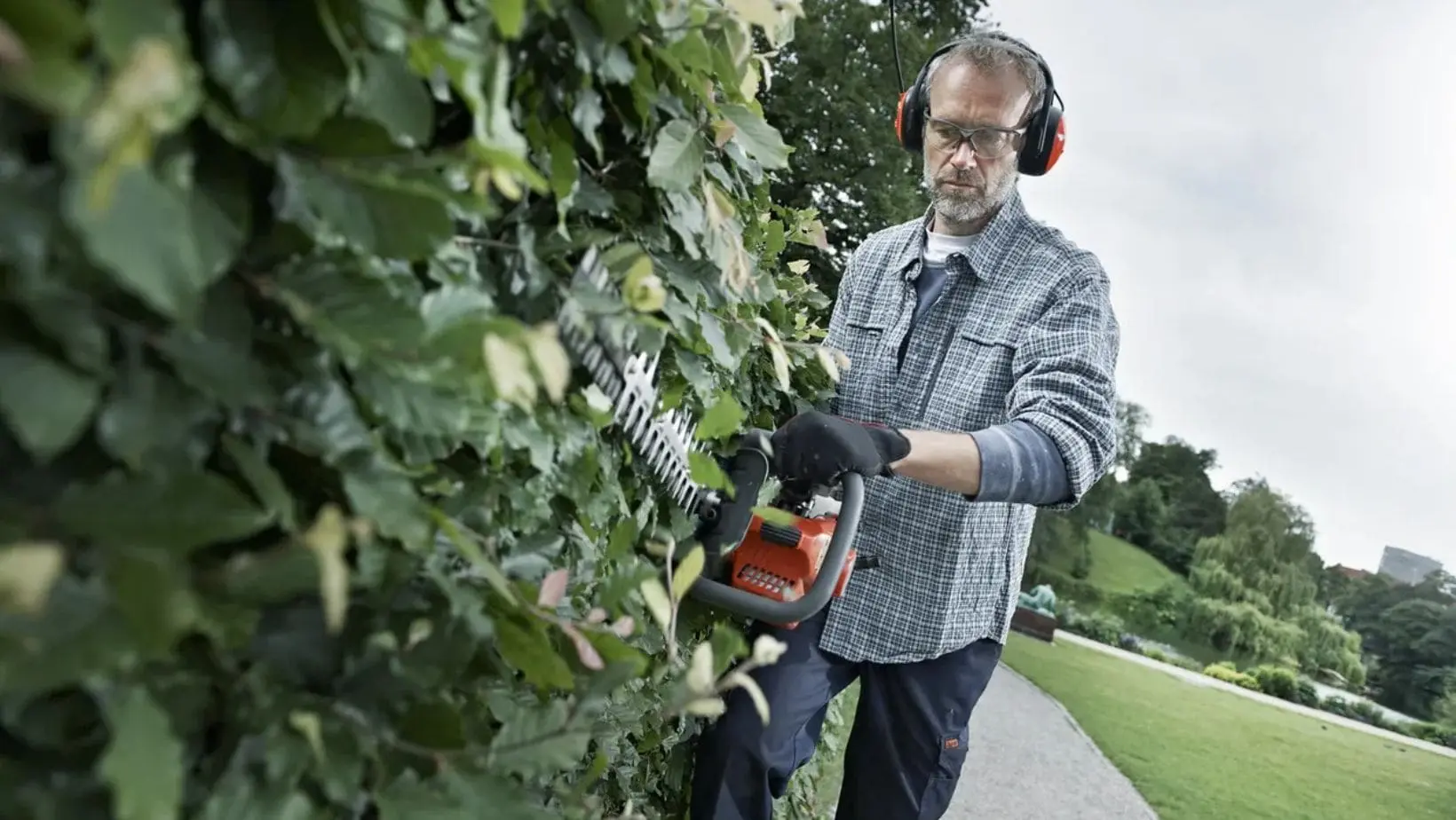
Best Practices for Staying Safe When Operating Garden Machinery
Gardening may be a relaxing hobby for many, but the machinery involved can turn peaceful pruning into a perilous pursuit if handled carelessly. With today’s equipment growing more powerful and sophisticated, following proper safety procedures is more important than ever. Whether you’re a weekend gardener or full-time landscaper, protecting yourself with the right techniques and PPE in gardening can save you from injury and ensure you do the best possible job.
Here, we’ll guide you through essential garden machinery safety tips and outline best practices for using various tools—so you can work smart, stay safe, and enjoy the fruits (and flowers) of your labour.
Understanding Your Machinery
 Before you pull the starter cord or press a power button, take the time to familiarise yourself with the equipment. Every tool—from a lawnmower to a chainsaw—has unique safety considerations and operational guidelines. Reading the manual may not be the most thrilling part of gardening, but it’s an essential step in preventing accidents and misuse. It’s also crucial to know your tool’s limitations. For example, attempting to trim a tree with a strimmer isn’t just ineffective—it’s a recipe for disaster.
Before you pull the starter cord or press a power button, take the time to familiarise yourself with the equipment. Every tool—from a lawnmower to a chainsaw—has unique safety considerations and operational guidelines. Reading the manual may not be the most thrilling part of gardening, but it’s an essential step in preventing accidents and misuse. It’s also crucial to know your tool’s limitations. For example, attempting to trim a tree with a strimmer isn’t just ineffective—it’s a recipe for disaster.
Dress for Safety: PPE in Gardening
Wearing appropriate gardening PPE is one of the most effective ways to prevent injuries. Protective clothing acts as your first line of defence. Long-sleeved tops and full-length trousers protect your skin from thorns, insect bites, sunburn and even chemical splashes. Gloves provide both grip and protection, helping you handle equipment with confidence. A good pair of steel toe-capped boots will offer crucial protection from dropped tools and improve your stability on uneven or slippery ground.
When you’re working with powerful bladed tools, additional PPE is required. Chainsaw users, for instance, should wear specially designed chainsaw protective clothing, which includes cut-resistant trousers, boots, gloves, ear defenders, visor and goggles. Landscapers and professional gardeners may also require more specialised items, such as padded jackets and helmets. Every element of PPE equipment for gardening plays a role in ensuring that your tasks remain productive and relatively risk-free.
 Eye and Ear Protection
Eye and Ear Protection
Your eyes and ears are particularly vulnerable in the garden. Whether you’re mowing, strimming or shredding, debris can fly up without warning. Wearing protective gardening goggles in many tasks is essential, especially when working near hedges, trees or gravel paths. Choose snug-fitting, impact-resistant safety goggles for gardening that stay secure and keep your vision clear.
Some power tools generate significant amounts of noise. Repeated exposure to these high decibel levels can lead to hearing loss over time. That’s why wearing appropriate ear protection—either plugs or ear defenders—is strongly advised. The SNR or HML rating of each product will tell you the level of sound reduction you can expect, so be sure to match your choice to your equipment’s output.
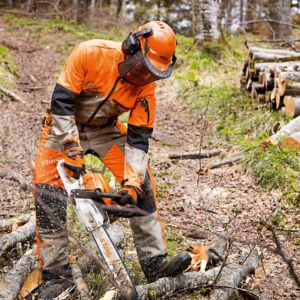 Chainsaw Safety
Chainsaw Safety
Few garden tools are as potentially dangerous to use as a chainsaw. To use one safely, it’s vital to wear full chainsaw PPE. That includes specialist protective clothing, robust gloves, steel-toe-cap boots, and a helmet equipped with ear defenders and garden safety goggles.
It’s equally important to follow proper operating procedures. Keep both hands on the tool at all times and remain fully aware of your surroundings—especially if others are nearby. Never leave a chainsaw running unattended, and absolutely avoid using it while on a ladder or up a tree unless you have professional training. Missteps at height can have severe consequences.
Chainsaw PPE is available in multiple protection classes, from Class 0 to Class 3, based on the chain speed resistance they offer. Class 1 is typically sufficient for general domestic use, but always refer to your equipment manual and sizing guide to ensure you’re using the right gear.
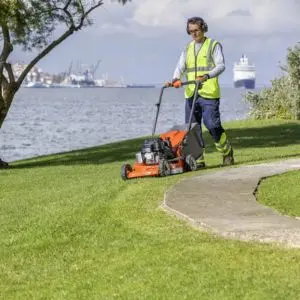 Lawn Mowing PPE
Lawn Mowing PPE
Lawnmowers are probably the most widely used garden machinery, but that doesn’t mean they’re without risk. Before you mow, clear the lawn of any sticks, stones or toys that could become dangerous projectiles. If the grass is wet, it’s best to wait—wet cuttings can clog the machine and even cause it to overheat, posing a fire risk or leading to burns.
Always mow forwards rather than pulling the machine towards you. Pulling increases the chances of slipping and dragging the mower over your feet. Suitable PPE for lawn mowing—such as sturdy footwear, gloves, and potentially eye and ear protection—can help you stay in control and avoid injury.
 Using Hedge Trimmers Safely
Using Hedge Trimmers Safely
When using a hedge trimmer, wear clothing that covers your arms and legs to reduce the risk of scratches and scrapes from hedge debris. Hold the trimmer with both hands for full control, and always check that the cord (if applicable) is kept well out of the way to prevent trips or tangles. Before you start, clear the area of any loose branches or items that could jam the blades.
Gardener PPE is particularly helpful when using a hedge trimmer, as they often fling twigs or clippings in unexpected directions. Protective gardening goggles and gloves will give you added confidence and reduce the likelihood of accidents. Robust footwear is also recommended, as are ear defenders on noisy petrol models.
 Brushcutters and Strimmers
Brushcutters and Strimmers
Grass strimmers and brushcutters might sometimes appear lightweight, but they require just as much care as larger machines. Wear a dedicated strimmer harness to evenly distribute the tool’s weight across your shoulders, helping reduce strain during longer sessions.
Be cautious of your surroundings, especially if working near gravel, paths or walls. Never use a strimmer above shoulder height—it’s hard to control at that angle, and the consequences of dropping it can be serious. Proper PPE for gardeners—particularly gloves, boots and eye protection—will help protect against flying debris and ensure a safer working experience. Again, use ear defenders with noisier, more powerful models.
 Operating Chippers and Shredders
Operating Chippers and Shredders
Place chippers and shredders on a stable, level surface and ensure good ventilation before you begin work. Keep the discharge chute clear of people, and never force material through—if the machine jams, switch it off completely before attempting to deal with the blockage. Some models allow you to reverse the blades to help clear it safely.
Because garden shredders produce both noise and airborne particles, wearing protective gardening goggles and ear protection is a must. Gloves will also help you handle material safely and reduce the risk of splinters or scrapes.
Everyday Best Practices for Garden Safety
Regardless of which tool you’re using, a few universal best practices can help you remain safe. Always inspect your equipment before use. Look for frayed wires, worn components, or blunt blades that could cause unexpected failures. Unplug electric tools when not in use and never leave sharp objects lying around—especially in spaces where children or pets might wander in.
 Only use each tool for its intended purpose, and don’t take unnecessary risks by working in poor weather conditions. Rain, frost or high winds increase the risk of slips, falls and electrical hazards. And if you’re ever unsure how to use a particular piece of machinery, refer to the manual or seek advice from us. Guesswork and garden tools are a dangerous mix.
Only use each tool for its intended purpose, and don’t take unnecessary risks by working in poor weather conditions. Rain, frost or high winds increase the risk of slips, falls and electrical hazards. And if you’re ever unsure how to use a particular piece of machinery, refer to the manual or seek advice from us. Guesswork and garden tools are a dangerous mix.
Your Safety Matters
Operating garden machinery should never be taken lightly. With the right PPE, a cautious mindset, and a solid understanding of each tool, you can reduce risk and carry out garden work safely. Whether you’re pruning hedges or cutting through logs with a chainsaw, PPE in gardening is the one investment that always pays off.
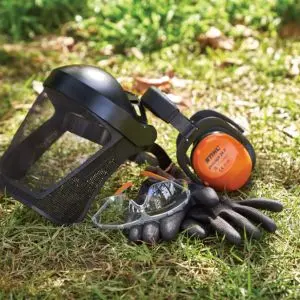 Trust the Safety Experts at GMD
Trust the Safety Experts at GMD
If you’re looking for top-tier protection and expert guidance, Garden Machinery Direct is the place to come. We offer an unbeatable selection of PPE for gardeners and landscaping protective clothing, from basic gardening gloves to full chainsaw PPE.
What’s more, our team knows garden machinery inside out and can help you find the right PPE equipment for gardening to suit your tasks and budget. Whether you’re a seasoned professional or a weekend warrior, we’re always on hand to offer you the benefit of our advice. Remember, the best gardens start with safe gardeners.

